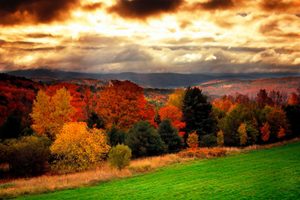
While many informal polls have suggested this has been one of the worst allergy seasons in recent years for Vermont residents, new scientific evidence confirms this to be true.
Dr. Edward Kent of South Burlington-based Timberlane Allergy Asthma and Research examines mold spores and pollen to determine current and predict future conditions. The institution routinely hands its results over to local weather stations that then distributes the findings to the general public.
Lynn Moon, a clinical research supervisor and colleague of Kent, concluded after tedious research that current pollen counts may be high because of weather patterns dating back to 2012.
In 2012 many areas in Vermont suffered from a hot, dry summer, which may have caused trees to release more pollen earlier this year. Current environmental conditions prevented timely mowing, which further increased pollen counts.
"With all the rain in June, we had a lot more land that was cut late this year; therefore, much more heading (flowering) and likely more pollen production," said Sid Bosworth, a UVM Extension professor. "The rain may have also delayed mowing road sides as well allowing more plants to flower than normal."
The result has been disastrous for people who suffer from allergies, and little relief may be around the corner.
Kent noted that ragweed just began releasing billions of pollen grains about two weeks ago, a week earlier than normal. Ragweed can affect people until around November.
If you are searching for relief, allergy-proof your home. Consider cleaning out your air conditioners or purchasing a dehumidifier to control mold spores.
Another way to manage allergies is to avoid triggers. Visit Allergy Be Gone's store for a wide range of allergy control products.









